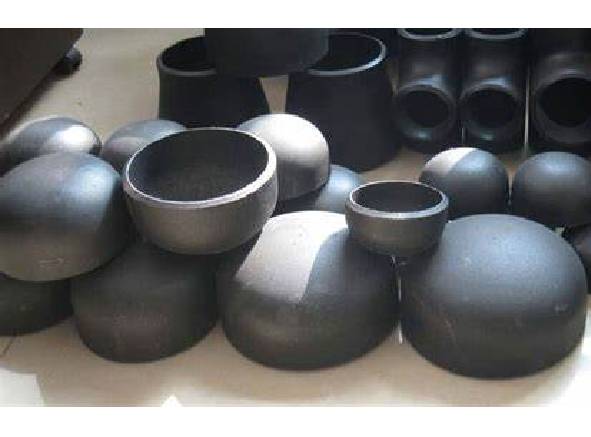-
Cangzhou Yulong Steel Co., Ltd.
-
Phone:
+86 13303177267 -
Email:
admin@ylsteelfittings.com
- English
- Arabic
- Italian
- Spanish
- Portuguese
- German
- kazakh
- Persian
- Greek
- French
- Russian
- Polish
- Thai
- Indonesian
- Vietnamese
- Zulu
- Korean
- Uzbek
- Hindi
- Serbian
- Malay
- Ukrainian
- Gujarati
- Haitian Creole
- hausa
- hawaiian
- Hebrew
- Miao
- Hungarian
- Icelandic
- igbo
- irish
- Japanese
- Javanese
- Kannada
- Khmer
- Rwandese
- Afrikaans
- Albanian
- Amharic
- Armenian
- Azerbaijani
- Basque
- Belarusian
- Bengali
- Bosnian
- Bulgarian
- Catalan
- Cebuano
- China
- China (Taiwan)
- Corsican
- Croatian
- Czech
- Danish
- Esperanto
- Estonian
- Finnish
- Frisian
- Galician
- Georgian
- Kurdish
- Kyrgyz
- Lao
- Latin
- Latvian
- Lithuanian
- Luxembourgish
- Macedonian
- Malgashi
- Malayalam
- Maltese
- Maori
- Marathi
- Mongolian
- Myanmar
- Nepali
- Norwegian
- Norwegian
- Occitan
- Pashto
- Dutch
- Punjabi
- Romanian
- Samoan
- Scottish Gaelic
- Sesotho
- Shona
- Sindhi
- Sinhala
- Slovak
- Slovenian
- Somali
- Sundanese
- Swahili
- Swedish
- Tagalog
- Tajik
- Tamil
- Tatar
- Telugu
- Turkish
- Turkmen
- Urdu
- Uighur
- Welsh
- Bantu
- Yiddish
- Yoruba

Aug . 27, 2024 15:35 Back to list
High-Quality 3 4 Stainless Steel Pipe - Durable and Reliable Solutions
The Advantages and Applications of 304 and 316 Stainless Steel Pipes
Stainless steel has become an indispensable material in various industries, thanks to its remarkable corrosion resistance, durability, and aesthetic appeal. Among the various grades of stainless steel, 304 and 316 are the most commonly used, especially for pipe applications. This article will delve into the characteristics, advantages, and applications of 304 and 316 stainless steel pipes.
Understanding the Grades
304 stainless steel, often referred to as 18/8, consists of 18% chromium and 8% nickel, which provides excellent corrosion resistance and good formability. This grade is known for its high tensile strength and excellent workability, making it suitable for a wide range of applications.
On the other hand, 316 stainless steel contains 16% chromium, 10% nickel, and 2% molybdenum. The addition of molybdenum significantly enhances its resistance to pitting and crevice corrosion, particularly in chloride environments. As a result, 316 stainless steel is often used in more demanding conditions, such as marine applications or chemical processing.
Advantages of 304 and 316 Stainless Steel Pipes
1. Corrosion Resistance Both 304 and 316 stainless steel pipes exhibit exceptional corrosion resistance. 304 is suitable for most environments, while 316's added molybdenum makes it ideal for harsh conditions, including exposure to saltwater.
2. Durability and Strength Stainless steel pipes are incredibly strong and durable, which translates to a longer service life compared to other materials like plastic or carbon steel. This strength makes them suitable for high-pressure applications.
3. Hygienic Properties Stainless steel is non-porous, making it easy to clean and maintain. This characteristic is crucial in industries such as food and beverage, pharmaceuticals, and healthcare, where hygiene standards are paramount.
3 4 stainless steel pipe

4. Aesthetic Appeal The sleek, shiny appearance of stainless steel adds a modern touch to any installation. This makes 304 and 316 pipes popular choices for architectural applications and decorative elements.
Applications of 304 and 316 Stainless Steel Pipes
304 stainless steel pipes are widely used in a variety of industries. Common applications include
- Food and Beverage Industry Used for piping systems in food processing plants and breweries due to their hygienic properties. - Construction Ideal for structural applications, both indoors and outdoors, owing to their rust resistance. - Oil and Gas Utilized for assembling pipelines where moderate corrosion resistance is required.
On the other hand, 316 stainless steel pipes are preferred in more corrosive settings, with applications that include
- Marine Applications Used for boat fittings, marinas, and coastal construction due to their superior resistance to seawater. - Chemical and Petrochemical Industries Ideal for transporting aggressive chemicals owing to their exceptional durability. - Pharmaceutical and Biotechnology Perfect for piping systems requiring cleanliness and resistance to corrosive substances.
Conclusion
In summary, 304 and 316 stainless steel pipes offer numerous advantages that make them suitable for a diverse range of applications. Their durability, strength, and resistance to corrosion ensure they are integral in modern industry, contributing to safety and efficiency in countless operations. Whether you're considering materials for a construction project or a manufacturing process, stainless steel pipes stand out as a reliable choice.
Latest news
-
ANSI 150P SS304 SO FLANGE
NewsFeb.14,2025
-
ASTM A333GR6 STEEL PIPE
NewsJan.20,2025
-
ANSI B16.5 WELDING NECK FLANGE
NewsJan.15,2026
-
ANSI B16.5 SLIP-ON FLANGE
NewsApr.19,2024
-
SABS 1123 FLANGE
NewsJan.15,2025
-
DIN86044 PLATE FLANGE
NewsApr.19,2024
-
DIN2527 BLIND FLANGE
NewsApr.12,2024
-
JIS B2311 Butt-Welding Fittings LR/SR 45°/90° /180°Seamless/Weld
NewsApr.23,2024











